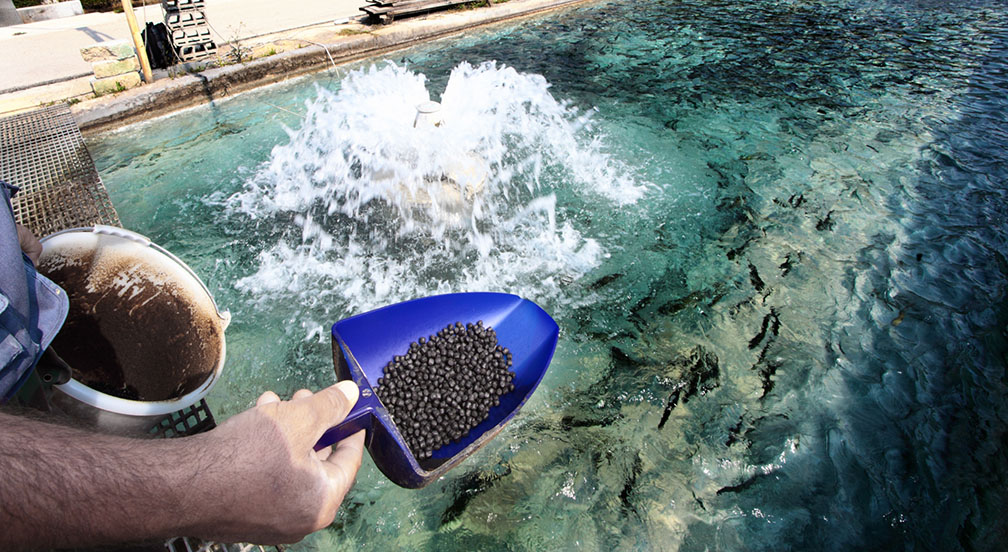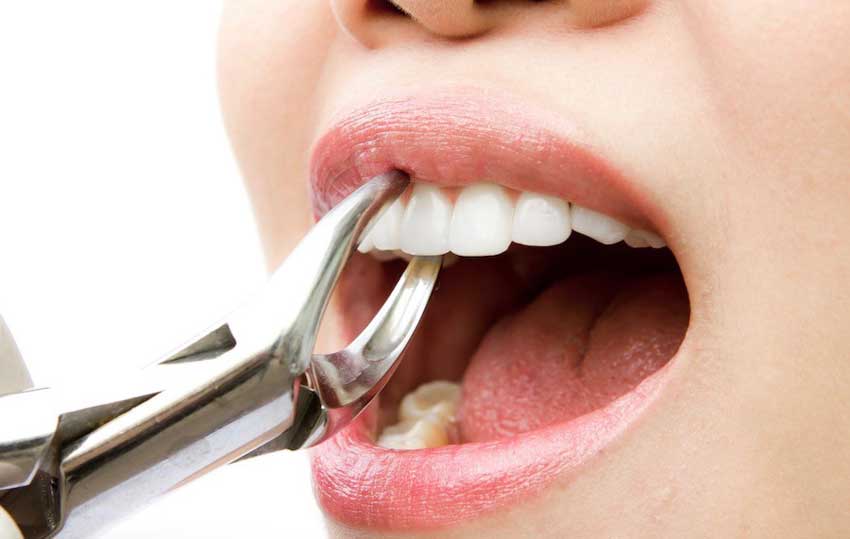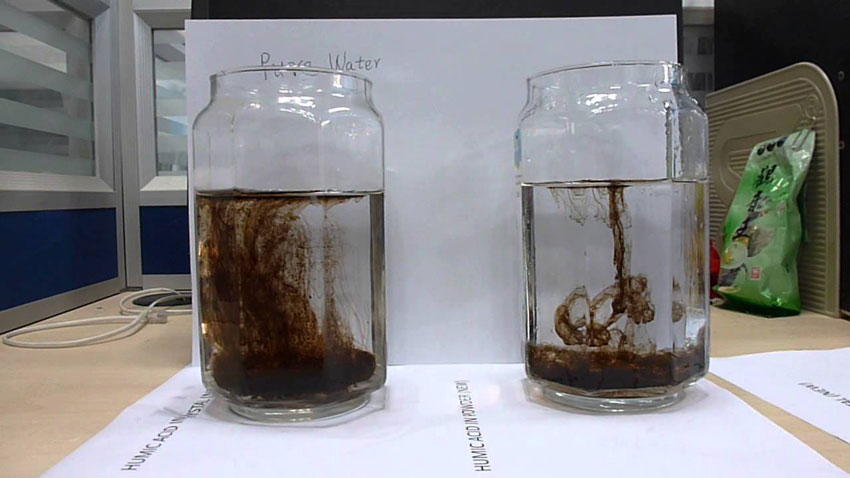 Sodium humate is an important water purifying agent in aquaculture feeding. With low cost and a good effect.
Sodium humate is an important water purifying agent in aquaculture feeding. With low cost and a good effect.
Sodium humate in aquaculture: Increase production, reduce disease and pollution.
-
- Many fish farms reflect the increase of the feeding amount of the fish after feeding the sodium humate to the fish. And the disease resistance and the survival rate of the larvae are obviously improved. The fish farm soak the feed corn flour with sodium humate at a concentration of 4 % to feed fish. 40days after, the survival rate of white herring and grass carp was 28.4% and 24.5% higher than that in the control group. And the weight gain was higher than that of the control by 19.8% and 34.5%, respectively.
- The modified sodium humate preparation is used to feed the river crab for 6 months. The yield per 665㎡ is increased by 20kg. The output/input ratio is 55:1. The young crab is soaked with the fulvic acid-2 solution, the survival rate is increased by 10%. The fulvic acid-1 is fed to the soft-shelled turtle, the average weight gain is increased by 5.7%. And the survival rate is increased by 12.14%.
- The sodium humate has certain effect on the prevention and cure of some common diseases. Such as using sodium humate with a concentration of 0.02% to bathe the fish infected with the white skin disease and the water mold. After 7-10 days, the survival rate is 100%. And the mortality rate of the control group is 7.5%. And it has a certain curative effect on the enteritis of the fish.
- The cation semi-permeable membrane test shows that the absorption of the copper in the complex state is about half that of the free Cu 2 +.Obviously. The water treated by the humic acid can reduce or prevent the pollution of the heavy metal to the fish. Thus providing a new thought for improving the food safety of the fish.
Sodium humate in aquaculture: Regulating the water quality of aquaculture ponds.
Humic acid is the most important regulator for water condition

-
- Maintaining the good biochemical environment of aquaculture pond is the basic condition to ensure the health and high quality and high yield of aquatic animals. The decomposition of excreta in fish ponds will produce NH3. And pH will increase gradually with the increase of dissolved NH3 in water. When the pH exceeds 9.5, the life activity of fish is slow. Especially when the N content and pH in the water are very high, the oxygen content decreases obviously, the undecomposed organic pollutants increase,the plant plankton decreases, the water quality deteriorate sharply,the fish and shrimp are in danger of asphyxiation and death.
- The most suitable pH range for fish ponds is 7.7- 9.0. Under these conditions, it is most suitable for source of supply and culture -the survival of blue algae plankton. The results show that the addition of humic acid in fish ponds is beneficial to adjust the concentration of H ion. Buffer the acidity and alkalinity of water. And make it maintain in the normal range. Secondly, humic acid can adsorb NH3 and H2S in water, which plays the role of purification pool.
- The humic acid and the heavy metal ion act to form an insoluble complex. So that the toxicity of the excessive water-soluble harmful heavy metal to the fish and shrimp is reduced. At the same time, the blue algae is extremely sensitive to the balance of the essential metal ion composition. And the humic acid can play a buffer role in the balance process.
Experiments of sodium huamte in aquaculture
-
- Humic acid in sodium humate can promote the growth and biochemical metabolism of beneficial algae. For example: Put sodium humate into eel pond (9kg dry powder / 100M3 water), and the water quality was obviously improved. the eel yield increased from 1320kg/d to 1980kg / D.
- The toxicity of heavy metals (Cu2, Zn2, etc.) was effectively eliminated and the water quality was purified by adding 5mg/L modified humic acid to the pond.
- The hatching rate of fertilized eggs of Penaeus chinensis was increased from 40% to more than 90%. The time of nauplius coming out of the pool was 1 -2 days earlier. The survival rate was as high as 89% (the survival rate was only 74% by using 2mg/L EDTA with). The overall effect was better than that of EDTA.
- The nutrient solution was made by combining humic acid with a certain proportion of K, Fe2, Mg2, Mn2 and B vitamins, and then mixed with clay, fine sand and polyvinyl alcohol binder to make the particle matrix for the bottom of the aquarium. Which can keep the water quality clear, make the water grass luxuriant and the ornamental fish beautiful and strong.
- Humic acid has obvious effect on cleaning water quality. Reducing poison. Inhibiting disease and increasing beneficial flora to improve the immunity of fish and shrimp. The average yield increase rate is 28.8%. The output/ input ratio is 52: 1. Which has been recognized by the majority of users.






